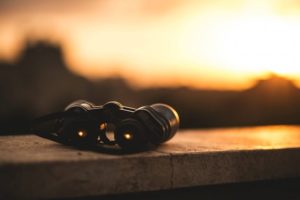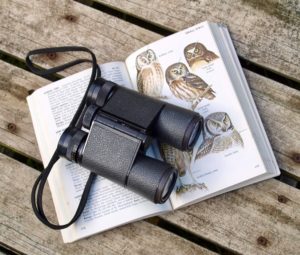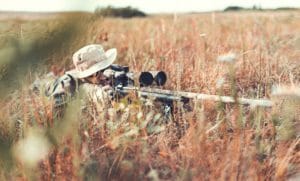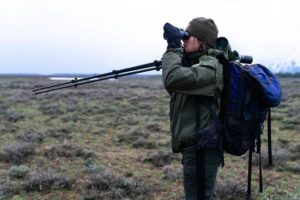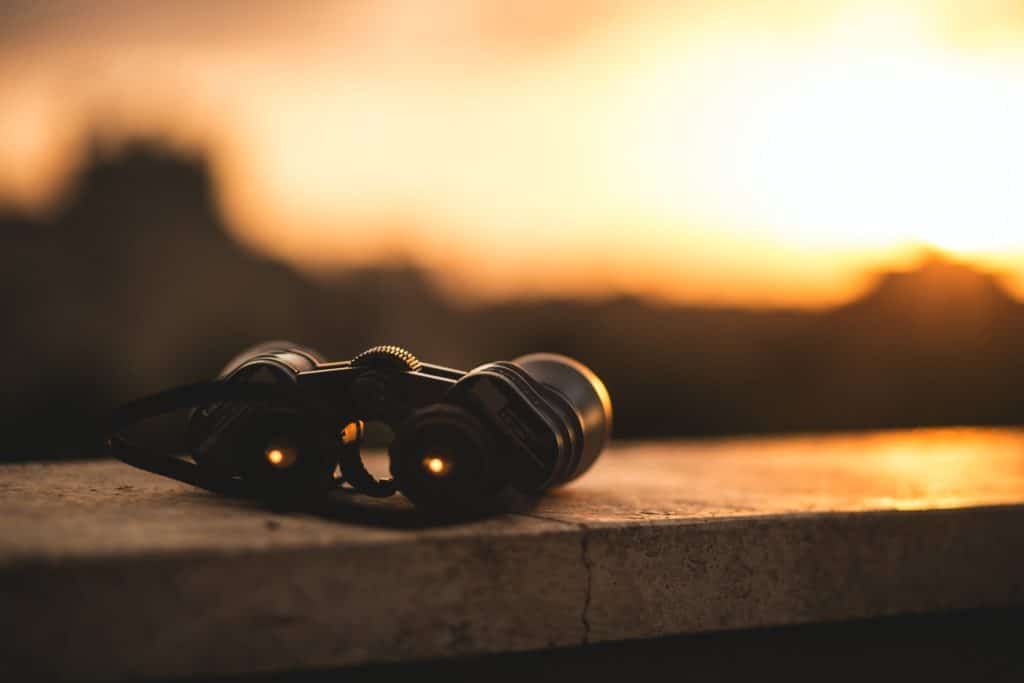Besides eyeglasses, binoculars are perhaps the most popular optical tool used for individual needs. A solid pair of binoculars comes in handy for all manner of events, from sports to stargazing, watching birds, wildlife, and concerts; the list is endless!
10×50 binoculars have decent magnification and can be used in all light levels.
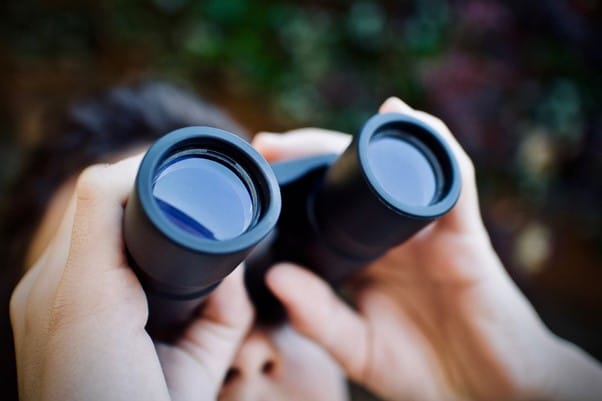
When choosing a pair of the best 10×50 binoculars, you need to consider several essential factors and some crucial ones that fit your particular specifications.
This guide looks at several types of 10×50 binoculars, their various applications, and our top recommendations for the best 10×50 binoculars for your optimal use.
If you want to go straight to our top pick, it’s the Vortex Optics Diamondback 10×50 Binoculars. Here is the full list if you want to skip the reviews:
- Vortex Optics Diamondback 10×50 Binoculars — Best Overall
- Maven C3 ED Binocular — Best Waterproof and Fog-Proof
- Opticron Imagic BGA VHD 10×50 — Best Roof Prism
- Olympus Trooper 10×50 DPS Binoculars — Best for Photographers and Beginners
- Sky Genius 10×50 Binoculars — Budget Friendly
- Nikon 7245 Action Ex 10×50 Binoculars — Best for People Wearing Glasses
- Opticron Adventurer WP 10×50 Binoculars — Best for Astronomy Viewing
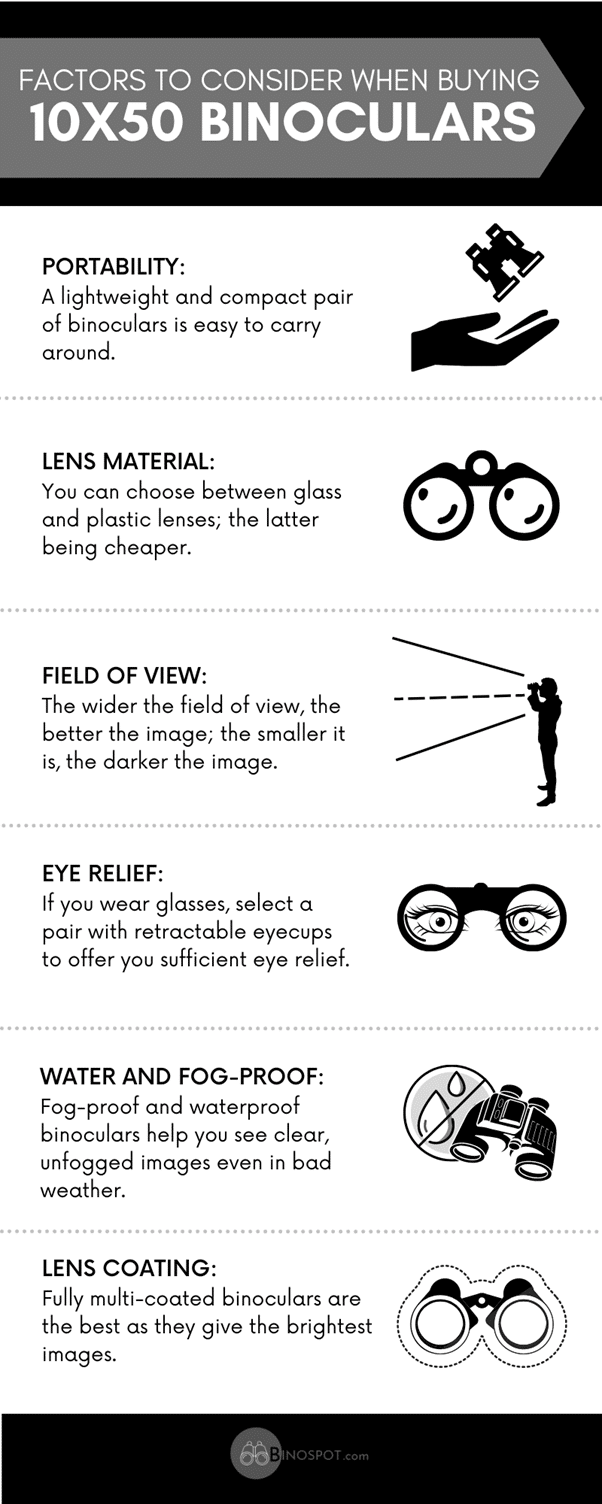
What Does 10×50 Mean?
People often get confused by the two numbers used to describe binoculars, but they have a relatively simple explanation. The first number, 10, is the magnification. Looking through 10×50 binoculars, objects will appear ten times closer than with the naked eye.
The higher the magnification, the closer the image will appear compared to the naked eye.
The second number, 50, refers to the size of the objective lens, measured in millimeters. The objective lens is the larger one farthest from your eyes.
Larger objective lenses are best for low light conditions as they gather more light. Therefore, they are perfect for evening wildlife viewing and amateur stargazing.
However, a larger objective lens adds to the overall size and weight, and significantly increases the price.
What to Consider When Choosing 10×50 Binoculars
Before buying your 10×50 binoculars, there are several factors to consider to find the best product for your needs.
Lens Material
The lenses made for binoculars are usually glass, but plastic lenses are also available. Binoculars with plastic lenses are often cheaper, and as expected, do not offer the same quality of optics.
Plastic lenses are more durable and can handle falls better. We recommend plastic lenses for novice users and children.
Lens Coating
The lens coating reduces the amount of light reflected while allowing the maximum amount of light to go through the lens. Coated lenses transmit more light, offer more clarity and sharper images overall.
The overall quality of the lens ensures the image viewed is aberration-free and has a sharp contrast. Cheaper binoculars can lose over 30% of light before the image reaches your eye.
A superb quality lens works better in low light conditions, transmitting more light. It also ensures the colors are vibrant and not distorted.
There are several types of coatings available, and the type used on the lenses will normally be reflected in the price of the binoculars.
- Coated: If it just says ‘coated,’ it means that there is just one anti-reflective coating on at least one lens.
- Fully coated: This means that the coating is on the ocular lens, objective lens, and prism.
- Multi-coated: Multi-coated means that there are multiple layers on at least one lens.
- Fully multi-coated: For this, every surface, the objective lens, ocular lens, and prism have multiple coatings, which is a sign of the highest quality of binoculars.
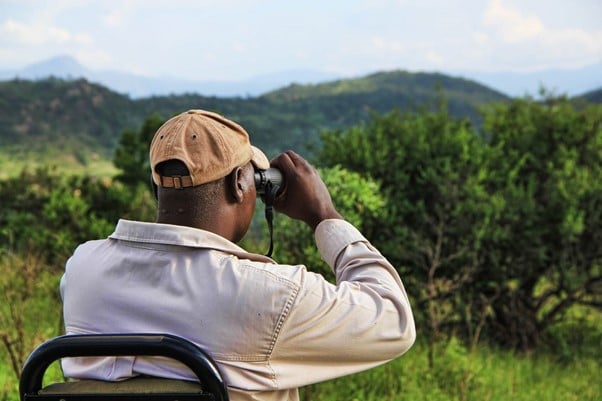
Exit Pupil
When you point a pair of binoculars out a window during the day, you will see a little circle of light, thanks to the exit pupil. Better put, the exit pupil is the tiny hole in the ocular that allows you to see images.
A higher number for the exit pupil means more light gets to your eye, especially in low light situations. It also means it will be easier to maintain a full, crisp image of your object regardless of whether your hands move or shake.
To calculate the exit pupil size, you divide the diameter of the objective lens by the magnification number. Given your binoculars are 10×50, 50 divided by 10 would equal an exit pupil diameter of 5mm. Therefore, the 10×50 binoculars would be perfect for low-light situations like dawn and dusk.
Field of View
The field of view is a pretty simple factor to keep in mind because it tells you the width you can see when the binoculars are not zoomed.
If a binoculars’ field of view is 450 yards it means that, at 1,000 yards from where you are viewing, the image you can see through the binoculars measures 450 yards edge to edge.
So, for example, if you want to go bird watching, a wide field of view is best to scope out the landscape better.
The smaller your field of view, the harder it is to follow your subject of interest, say wild game.
A small field of view also means that much less light gets in; thus, the images can be slightly dark.
Eye Relief
This is the amount of distance between your eye and the eyepiece that allows you to see the whole field of view offered by your binoculars without the image vignetting. Eye relief is mainly an issue for spectacle wearers.
Today, most manufacturers accommodate people wearing glasses by providing retractable eyecups. If you wear glasses, our recommendation would be to adjust eyecups to the minimum position to provide enough eye relief.
Using binoculars with an eye relief lower than 10mm, you can only see the center of the image. Most binoculars have an eye relief of 8-13mm. But newer LE models offer eye relief of up to 18mm, and this can make all the difference for people who wear glasses.
Size
Binocular sizes are often broken down into compact, mid-size, and full-size categories based solely on the size of their objective lenses.
It is also essential to note that though binoculars are categorized by size, variations in design and construction mean that similarly sized pairs are likely to differ in weight.
- Compact binoculars: The objective lens size is less than 30mm (10×28, 8×25).
- Mid-size binoculars: The objective lens size is between 30mm and 40mm (8×32, 10×30).
- Full-size binoculars: The objective lens size is greater than 40mm (10×50, 8×42).
Full-size binoculars may be heavy and uncomfortable to hold over long periods, while mid-size and compact binoculars are the best for prolonged use.
Prism Glass
There are two types of prism in binoculars: Bak-4 and BK7. These terms refer to the types of glass used in the lenses. Bak-4 is a superior, high-density glass and is considered better quality than BK7 while costing much more.
If you are interested in bird watching or hunting, you should consider Bak-4. The antireflective properties give clearer images, thanks to their ability to transmit more light.
For casual use, on the other hand, you can go for BK7. It is a low-density glass that produces lower-quality images than BAK-4, especially in low light.
Types of 10×50 Binoculars
Porro Prism
The most common 10×50 binoculars are ones with a Porro Prism inside. This prism has the glass elements offset from each other which gives you a better depth of field and a brighter image, as it allows more light to filter through the glass.
Roof Prism
These types of 10×50 binoculars are far narrower and usually less robust than ones with Porro prisms. Roof prism binoculars are more streamlined and easier to grip since the glass elements are aligned.
This design is more expensive than the Porro prism.
Benefits of Using 10×50 Binoculars
- Bright images: One of the benefits of the 10×50 binoculars is that they brighten an image seen through its lens. Larger lenses and Porro Prism binoculars filter in more light.
- Detailed images: When using the 10×50 binoculars, you can view the image in tremendous detail. For instance, you can see a bird perched up a tree with the naked eye, but with the best 10×50 binoculars, you see individual feathers and patterns that you may not have noticed.
- Distanced viewing: The main aim of the 10×50 binoculars is to provide a better image from a distance than you would with your naked eye. The binocular lens helps you focus and see as far as 12 miles away compared to the human eye than can see up to 3 miles on a good day.
Our Recommendations of the Best 10×50 Binoculars
Vortex Optics Diamondback 10×50 Binoculars — Best Overall
Vortex Optics Diamondback Binoculars are often regarded as the best 10×50 binoculars, and for good reason; they are pretty affordable for the features offered.
For starters, the binoculars are fog-proof because they come with an argon gas fill. If you have glasses, the binoculars come with adjustable eye caps so you can use them quite comfortably. And if you have a different vision in each eye, this pair comes with center and diopter adjustments that are customizable for each eye.
The Vortex Optics Diamondback model comes with a great, reliable lifetime warranty. In the case of breakage, you are assured of a free repair.
Pros:
- They are anti-fog.
- They offer excellent eye relief.
- They offer a lifetime warranty.
- They have center and diopter adjustments.
Cons:
- They lack clarity at low light, such as dawn and dusk.
Maven C3 ED Binocular — Best Waterproof and Fog-Proof
Maven C3 is a relatively large pair of binoculars that’s waterproof, thus convenient in rainy weather conditions. They are also anti-fog because the binoculars are nitrogen-filled.
The Maven C3 is scratch-resistant, making them sturdy and able to resist wear and tear over long periods. This pair offers very vivid images due to the coating and prisms used.
The binoculars come with great, high-quality accessories such as a microfibre bag for optimal protection, a neoprene neck strap, and a pair of lens caps to care for your lenses.
Maven C3 ED is lightweight owing to the polymer frame and boasts an optimal multilayer system with low dispersion glass, which helps provide crystal clear, steady images while making distant observations. The binoculars perform exceptionally well in low-light environments.
Pros:
- Water-resistant.
- The package comes with high-quality accessories, i.e., a quality bag, neck strap, and lens caps.
- The binoculars perform well in harsh conditions.
Cons:
- They occasionally display distorted images.
Opticron Imagic BGA VHD 10×50 — Best Roof Prism
No products found.
If you prefer a roof prism pair of binoculars, then the Opticron Imagic would be a great, viable option. Although they are pretty costly, they come with high-quality components and coatings.
Opticron Imagic binoculars are pretty lightweight owing to the magnesium chassis that makes them more compact than other Porro prism counterparts. The fact that you can mount them on a tripod is a huge plus for most people.
Compared to Porro Prism models, the binoculars offer flexible viewing because of the focus wheel and a separate diopter adjustment. They also provide eye relief—a whopping 23mm with twist-up eye caps, so the full image is available even while wearing your glasses.
Pros:
- They provide eye relief of up to 23mm.
- They are lightweight, which is excellent for long expeditions.
- They can focus quite well due to the focus wheel and diopter adjustment.
Cons:
- Pretty costly.
Olympus Trooper 10×50 DPS Binoculars — Best for Photographers and Beginners
The Olympus Trooper Binoculars are widely revered for their clarity. They are pretty simple and fast to focus, making them an obvious photographer selection. That they are also lightweight and portable is a huge plus.
The binoculars are also great for people with poor eyesight because apart from giving the best images, they work just as well for eyeglass wearers even when they don’t have their glasses on.
Unfortunately, the Olympus Trooper binoculars are not waterproof and are highly susceptible to fogging. This makes them quite impossible to use on humid or rainy days.
Pros:
- They provide clear images.
- Lightweight and portable.
- Easy to focus.
Cons:
- Not waterproof.
- They easily fog up.
Sky Genius 10×50 Binoculars — Budget Friendly
The Sky Genius 10×50 Binoculars are the best 10×50 binoculars to consider if your budget is tight. They are excellent for birdwatching and wildlife watching. The 50mm lens and the 10x magnification provide clear images even in low-light environments.
The binoculars are easy to use with a comfortable grip, a smooth matte black finish, and adjustable eyecups. They also have a smooth, black rubber exterior that provides a handy shock absorption feature should you drop it.
The Sky Genius also comes with several accessories such as a carrying pouch to keep it safe, lens caps, and a cleaning cloth for your lens. Although the binoculars are compatible with a tripod, it is not included as part of the package. The pair is a versatile option to consider for viewing sports events and stargazing.
Though the binoculars are relatively light, the dimensions are pretty bulky. So if you are looking for a more compact pair of binoculars, this may not be the one for you.
Pros:
- The binoculars come with practical, quality accessories such as a lens cap and a sturdy strap.
- They are relatively light, thus easy to carry around.
- Very comfortable grip.
- Tripod friendly.
Cons:
- The dimensions make the gadget rather bulky.
- No tripod included.
Nikon 7245 Action Ex 10×50 Binoculars — Best for People Wearing Glasses
Nikon 7245 is another excellent type of 10×50 binoculars. The binoculars offer great eye relief, which helps people with glasses get the full image instead of just the center. They are also great for people who do not want to rest the binoculars on their faces.
A unique feature of the Nikon Action Ex is the non-slip grip on the sides of the binoculars. The binoculars are nitrogen-filled, which helps keep the internal mirrors and lenses from fogging.
Nikon 7425 comes with a pretty hefty lifetime warranty covering you for up to 25 years. If you are looking to minimize weight, these may not be the best 10×50 binoculars as they are more than 10% heavier than the Sky Genius.
A redeeming factor is that they come at a relatively fair price with excellent and clear optics from a recognizable brand. The binoculars are also quite sturdy and reliable.
Pros:
- They come with a pretty hefty lifetime warranty (25 years).
- They are nitrogen-filled to prevent fogging.
- They offer long eye relief.
- They provide excellent grip.
Cons:
- They are bulky.
Opticron Adventurer WP 10×50 Binoculars — Best for Astronomy Viewing
The Opticron Adventurer offers eye relief of about 17.8mm, which is great for people with glasses. They also have twistable eyecups that you can extend and retract as desired.
We highly recommend Opticron Adventurer as the best 10×50 binoculars for astronomy viewing. They provide the perfect optics and sharp contrasts for the typical viewings such as the Taurus (The Bull) and the Messier 44 in Cancer (The Crab).
This pair is less bulky than the market counterparts, earning them the title ‘Telescope Binoculars.’ Much to most customers’ delight, the binoculars are anti-fogging as they are nitrogen-filled.
Pros:
- Lightweight.
- They provide eye relief of up to 17.8mm.
- They offer excellent optics for the price.
Cons:
- Some customers complained that they felt insubstantial.

Frequently Asked Questions
Do I Need to Take My Binoculars Apart to Clean Them?
No! Binoculars are precision instruments that are finely aligned and may also be hermetically sealed to contain anti-fogging gas. Opening them for cleaning or repair should only be performed by a professional.
What Is a Diopter Adjustment on My Binoculars?
The diopter adjustment allows you to set your binoculars for your specific eyesight. This compensates for people without 20/20 vision. The diopter adjustment compensates for the focusing differences between your eyes.
Do I Need to Purchase a Tripod for My Binoculars?
If you have a large pair of binoculars, then yes, you may need to purchase a tripod. Also, if you intend to use them for astronomy, a tripod would be necessary to enjoy a more steady view.
What Are the Best Types of Binoculars for Long-Distance Viewing?
We highly recommend binoculars with an objective lens of up to 50mm and a magnification of about 16x. Buy lightweight binoculars as they are comfortable and offer a steady view without straining your hands.
In Summary
Binoculars have become essential to take part in beloved pastimes such as astronomy, wildlife viewing, birdwatching, and even watching a sports game. Our top recommendation for the best 10×50 binoculars is the Vortex Diamondback 10×50 because of the crisp and clear imagery and excellent eye relief.
The Maven C3 is our runner-up as they provide vivid high contrast images and are water-resistant, making them great for harsh weather conditions. They are followed closely by Opticron Imagic BGA VHD because although the latter is expensive, they are lightweight and can focus quite easily.
We highly recommend the Olympus Trooper DPS for beginners because they are sturdy, lightweight, and easy to focus.







